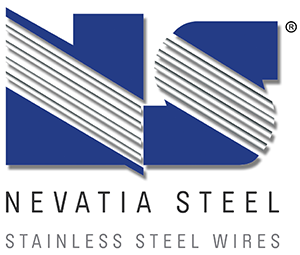
For long, welding industry has been using traditional methods of stick welding but the process was far more time consuming and skillful. MIG Welding approach has tremendously revolutionized the traditional approach to welding. MIG or Metal Inert Gas Welding aka Gas Metal Arc Welding (GMAW) was developed with an intention to streamline production by the fabrication industry. This new method of welding uses a wire roll as a welding electrode. The wire rarely needs to be refilled and feeds continuously creating the welding beads. In this manner, the solid wire electrode serves as a continuous source of filler metal.
Following features make MIG wires better over the traditionally used fillers:
- MIG wires are generally plated with copper to ensure zero oxidation making them ideal for the welding process.
- These wires have high electrical conductivity and help in enhancing the life of the contact tip in welding.
- MIG wires produce a clean weld bead appearance without any spatter.
- These wires reduce the chances of burn through and provide deep penetration through the root.
- MIG wires are best to apply onto thinner applications.
Selecting an appropriate, quality MIG wire is crucial to ensure a sound weld even when the conditions are not perfect. For example, consider the scenario of welding a plate with contaminants on the surface. Choosing the right MIG wire from reliable MIG wire manufacturers for the purpose will make certain pre-welding operations obsolete. A quality MIG wire ensures accuracy in placement and produces a consistent weld leading to less rework. Although you may buy a quality MIG wire from leading MIG welding wire manufacturers, you must consider following aspects while selecting your wire:
- Commonly used MIG wires include ER70S-3 and ER70S-6. These wires serve the welding requirements for minimum tensile strength. First one is used to weld clean, rust-free, oil-free material while the second one ensures clean welding on even scaly and contaminant prone surface. While selecting a wire, never go by one size fits all approach. Choose your wire depending on application and quality requirements.
- Ensure that your MIG wire has consistent wire diameter so that current properly passes from the contact tip throughput the wire. Undersized wires may cause arcing resulting in erosion of the I.D. of the tip thereby fusing the tip to the wire. Oversized wires, on the contrary, cause extreme feeding force, wire slippage, tip blockage, and downtime.
- Ensure that your wire has the constant chemical composition to ensure stable quality control.
MIG welding wires are excellent for literally any welding process. Whether you have to weld fabricated structures or automotive parts, use them for sheet metal applications or metal buildings, MIG wires perform excellently in every scenario. Their major advantage is that MIG wires require less cleanup even in case of multiple pass operations. Additionally, they require lower levels of operator skills. You can even use two MIG wires simultaneously for Tandem MIG process. On the basis of the equipment to be welded and procedure to be followed, a MIG wire provides the potential for all-position welding procedures ensuring less fixturing. Its lower heat input requirement, high electrode efficiency, and better placement make the MIG wire ideal for any welding operation.
